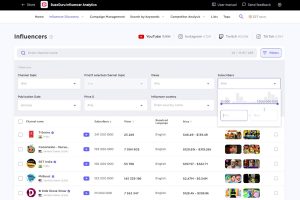Tech execs share their insights and methods on keeping stressed-out staff motivated, focused, and on-task.
With millions of people now working from home due to COVID-19, IT workers are getting increasingly stressed out as work piles up and they too find themselves adjusting to a new way of life far removed from friends and colleagues.
Early on, as companies worked feverishly to set up and provision thousands (or tens of thousands) of home offices, many IT shops put in long hours to get it done. Now that the initial rush has passed and companies are settling into the new normal of virtual meetings and distributed workforces, there is still much to do. According to technology-focused jobs site Dice, 72% of IT workers are seeing their workloads increase because of COVID-19.
Even though many IT workers have long viewed working from home as desirable, now that they are doing so full-time, many are feeling insecure about their jobs, overworked, and, too often, burned out. To be clear, burnout in IT has long been an issue (a quick Google search reveals articles about the topic going back years). COVID-19 has only exacerbated the problem.
“Since we started working from home [managers] are really trying to make sure they’re getting productivity out of us,” said a systems administrator who asked to remain anonymous. “Now we have daily stand-ups. We have to exhaustively track what we’re doing and what we’re going to be doing. The burnout is also based on the fact my home life and work life have meshed. Sometimes home life creeps into work life and vice versa.”
SEE: Top 100+ tips for telecommuters and managers (free PDF) (TechRepublic)
What this sysadmin is experiencing is not unusual, said Mike Levitt, a former CIO and founder of Breakfast Leadership, a consultancy that helps companies prevent employee burnout. One of the hardest parts of transitioning to remote work is finding the proper work-life balance. This problem is more acute for people who depend on daily routines and set work hours to keep their personal and work lives in balance.
“Our bodies and our brains are confused right now because we are working from home,” he said. “The long hours IT put in before COVID have actually increased because they are home and their management is in constant contact with them. What’s happening is these employees don’t have boundaries around their work day.”
Time management is a big stressor. Once people’s routines are gone, it’s easy to lose focus and become overwhelmed. To keep this from happening, Levitt recommends simple things like getting dressed in work clothes when you are working. (Contrary to popular belief, most long-time work-from-homers’ do not work in pajamas.) This will provide a semblance of continuity by bringing the office mindset into the home.
He also suggests that managers be clear but flexible about when employees need to be available and when they can be off the clock.
“It comes down to learning how to manage a remote workforce,” he said. “They’ve never done that. With everyone working remotely, there’s this element of not trusting employees to do their jobs. Managers sometimes think there’s only one way to do things but that’s not right. Let your team figure out the best way to do it. Let them be creative.”
SEE: Extended Sick Day policy (TechRepublic Premium)
Along with having regular team meetings and standups, Chris Sanchez, senior manager of End User Support at Zoro, puts this advice into practice everyday.
“You don’t necessarily have to work 8 to 4, 9 to 5,” he said. “If you have to get up a little earlier and want to get some stuff done, do that. If you want to stay a little later, to get some stuff done. Just be cognizant of when you’re messaging people and know that they might not respond until the next day.”
Jason Thompson, the IT Desktop manager for the town of Gilbert, AZ, encourages his team to reach out if they are feeling isolated and stressed. It doesn’t always have to be about work. When people are in the office together they talk about all kinds of things so keeping those conversations going is important.
“If you’re starting to feel isolated, knock that wall down, raise your hand, do something to engage with somebody or have somebody engage with you,” he said. “And again, we found that that seems to help quite a bit.”
Mark Runyon, a principal consultant at IT services firm Improving, lives both sides of the burnout equation. Not only is he working extra hours every day, he is supervising a team of 12 IT people who are putting in 10-hour days, as well.
“[Our client] had some very high-priority projects because of COVID so we are trying to accommodate them as much as we can but we are trying to put in place guardrails so we don’t run ourselves ragged, as well,” he said.
To keep his team motivated and focused until the pace lightens up, Runyon encourages them to set defined work hours and stick to them. He also tells them to take personal time when they need it. Runyon’s client understands stress levels are high and is comfortable with this arraignment, he said..
“Treat this like you are working on site,” he said. “Set defined hours and stick to those. If someone is hitting you up at seven o’clock, ask them if this can wait until tomorrow just to set those expectations so they are not infringing on that work-life balance. I’ve impressed on my people to take your PTO [personal time off] … so you are getting time away from work even if you are stuck at home. The idea is you need to come to us and say, ‘Hey, it’s been a hectic week, I just need a half day here’, and that’s fine.”
At ServerCentral Turing Group, a Chicago-based cloud consultancy, Chief Technology Officer Eric Dynowski is using the same flexible time-management tactics to keep his people from getting burned out. When they are done working Dynowski also tells him to turn off all their communications and collaboration tools so they can get away from work.
“When people are able to get their work done around a myriad of demands they’re facing at home, it will get done,” he said. “When these objectives become in competition with one another, work is going to lose.”
As a business leader he also stresses the need for understanding. People are all different and they require different things at different times. There is no one-size-fits-all approach to helping them manage the many challenges they face today.
“Another important thing is to remember everyone handles stress and uncertainty in a different manner,” he said. “You’re going to have to take the time to slow yourself down and really connect with team members … The simple act of being human, of being a person and not just an email, makes a tremendous difference in keeping people engaged and confident in the direction of the company.”
Also see

Source of Article




